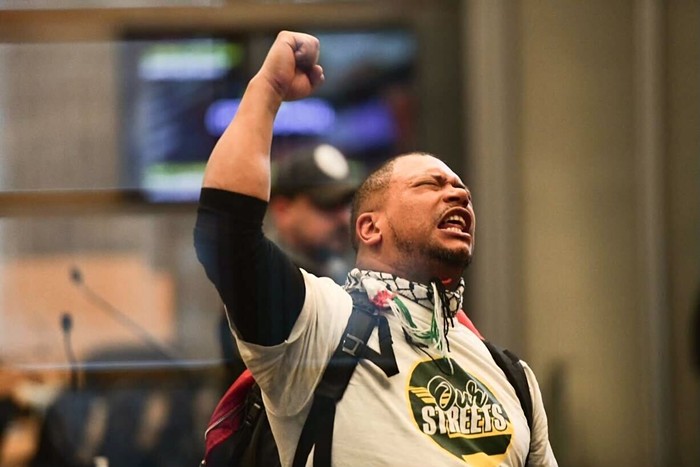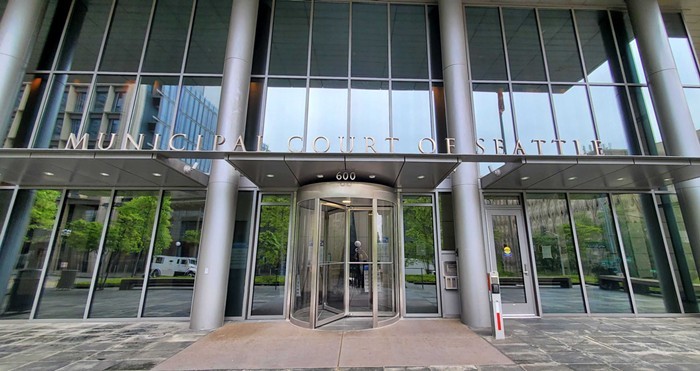Yesler Terrace, Seattle's oldest public-housing project, is showing its age. The 69-year-old wood-frame buildings are decaying. Residents say maintenance is spotty at best. The sewers are disintegrating, according to authorities who manage the property, and several of the 561 apartments for low-income tenants are uninhabitable. Rats make their homes there. The cluster of buildings on the southern slope of First Hill is hardly what you'd identify as one of Seattle's historic gems.
Now the Seattle Housing Authority (SHA), which owns and manages Yesler Terrace, wants to tear it all down and redevelop the site with towers that contain up to 5,000 mixed-income residential units. The redeveloped site would also include up to 1.5 million square feet of office space, 100,000 square feet of retail space, and eight acres of parks and open space. This sort of integration, SHA says, is the future of affordable housing.
"Through mixed-income housing, we have the opportunity to build something like 1,800 units for low-income people," says Virginia Felton, spokeswoman for SHA. The community currently houses only 1,200 people—many of whom are children, seniors, people with disabilities, and immigrants who speak scores of different languages—on its 28-acre site.
But at least one member of the stakeholder group advising the redevelopment is fighting to block construction (slated to begin within the next three years). John Fox, director of the Seattle Displacement Coalition, which advocates for homeless and low-income people, argues that SHA's proposed rebuild will actually reduce housing for the city's poorest people. So the group is fighting to keep Yesler Terrace intact by persuading Seattle's Landmarks Preservation Board to designate it a historic site.
The group may have a shot.
In an odd turnabout, the SHA had originally nominated its own project for consideration as a landmark earlier this summer. "We wanted to resolve the issue," says Felton. "We didn't want to get further down in the process and have someone else nominate us."
Someone else like Fox.
On August 18, Fox spoke at a hearing of the landmarks board, claiming that Yesler Terrace does, in fact, qualify for protection under city rules. It's the nation's first low-density public-housing development, he argues, and as such, should be preserved. It was also one of the country's early HUD models for creating low-income garden communities. (Never mind the crumbling plumbing and roving vermin that run through those lawns now.)
But SHA says saving the squat buildings surrounded by chain-link fences—the closest thing Seattle has to tenements—would be ludicrous. "They don't meet the needs of current residents," says Felton. "Seventy years ago, no one thought to build units for people with disabilities."
"These buildings were built to be temporary," agrees Kristin O'Donnell, a 38-year resident of one of the units. "They're getting soft around the edges."
But due to Fox's plea, the landmarks board will vote October 6 on the status of two of Yesler Terrace's 77 buildings—the community center and the steam plant. From there, Fox and the Displacement Coalition will try to convince state and federal officials that the remainder of the buildings are worth preserving.
"We will fight them tooth and nail," Fox says. "We will raise every possible issue."
If he wins at the city level, Fox would block SHA from tearing down two of the structures and replacing them with high-density, multiuse buildings. If Fox wins on a larger scale, the entire project could stop.
But his intent, he admits, is "not necessarily [to] stop a project, but [to] make sure that anything that happens there meets the needs of these people."
Indeed, Fox seems to be deploying this tactic more as a strategic means to push for a better project than to actually create flimsy landmarks. The problem stems from SHA's unwillingness to commit to replacing all the affordable housing there now on the same site in the future.
"We've repeatedly asked them to publicly commit to no net loss on-site for people living below 30 percent of the median income in Seattle," says Fox, "and they refuse."
SHA's argument is, indeed, fairly squishy. "We've guaranteed we'll replace the current 561 units in the neighborhood—or very close to it," Felton says. She adds that all of the units will be replaced "probably within a half mile" of the site's rebuild.
"The claims they're making about replacing—even including more—affordable housing are bogus," says Fox. "This project will provide a dramatic net loss of housing, especially for the poorest among us."
Fox is defining "the poorest among us" as people living at 30 percent of the city's median household income or below (or at $20,600). The SHA's definition of low-income housing is broader: The group uses 80 percent of the median income or below (or $51,550 or lower) as the low-income guideline for the Yesler Terrace rebuild.
"If you're talking off-site replacement, they can just point at any housing project that they've helped with or provided housing vouchers to and call that a one-to-one replacement when clearly it's not," he says.
So while Fox has a tactic that would be hellish if realized—already crumbling buildings allowed to stand indefinitely—his point may be valid. In quadrupling the number of units on that site (and selling office space), SHA has the means to include the affordable housing amid the other higher-end development that subsidizes it. ![]()



















